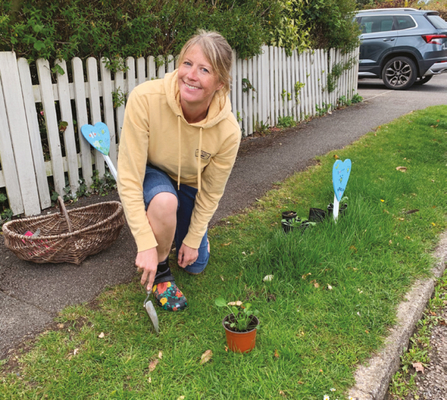With wild habitats at risk, bees and other pollinators need us to provide a food source in our gardens, balconies, allotments and community outdoor spaces.
Several SWT staff members have got their whole street involved and explain how they did it...
Kirsty Porter - Bookham
How to get started
I live in a really friendly street in Bookham. Before lockdown, we already did a monthly litter pick and other activities together, so I asked my neighbours if they were interested in growing wildflowers on the verge outside their houses.
I formed a WhatsApp group and got nine positive responses, so we were off. We marked out an area for each house - we mow our own verges, so we didn’t need permission from the council.
Meanwhile, I had become aware of the Bookham Blue Hearts Wildflower Verges Facebook group and got in touch with them. Their experience really helped.
We got a stock of blue heart signs and the children decorated them. We bought plug plants from the garden centre and people transplanted wildflowers from their back gardens.
Show it's deliberate
The response has been very positive. People want to do something and they respond better to a message from a neighbour than to ‘official’ information. They don’t want a mess in front of their house, but they love the idea of planting flowers – and by adding blue heart signs show that it’s deliberate. You just have to set expectations – a cornflower meadow won’t spring up overnight.
Take it steady
We’re planning to dig ponds and cut holes in fences for hedgehogs, but I think the secret is to pick one thing to start with. Somebody has to get it started – and it might as well be you!

